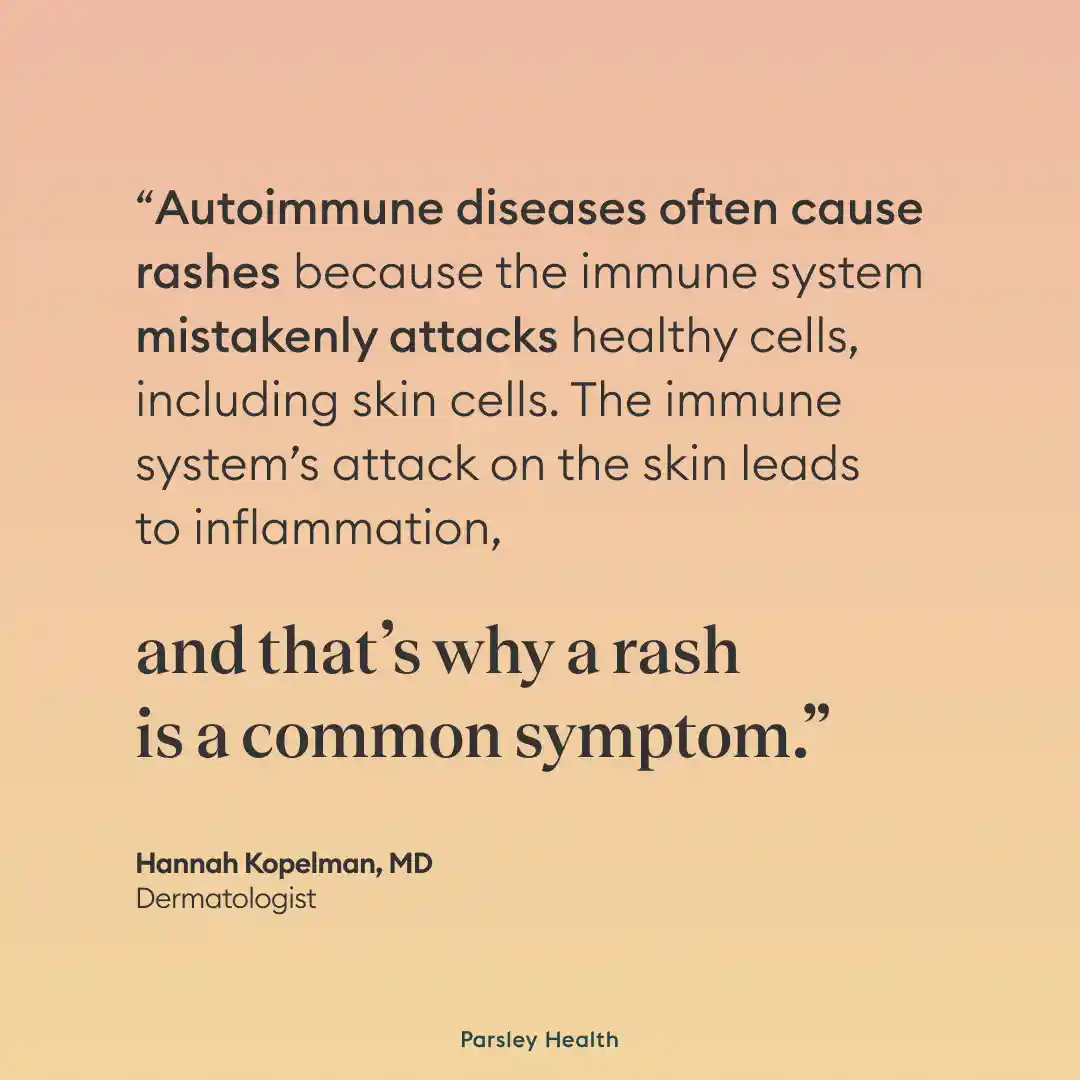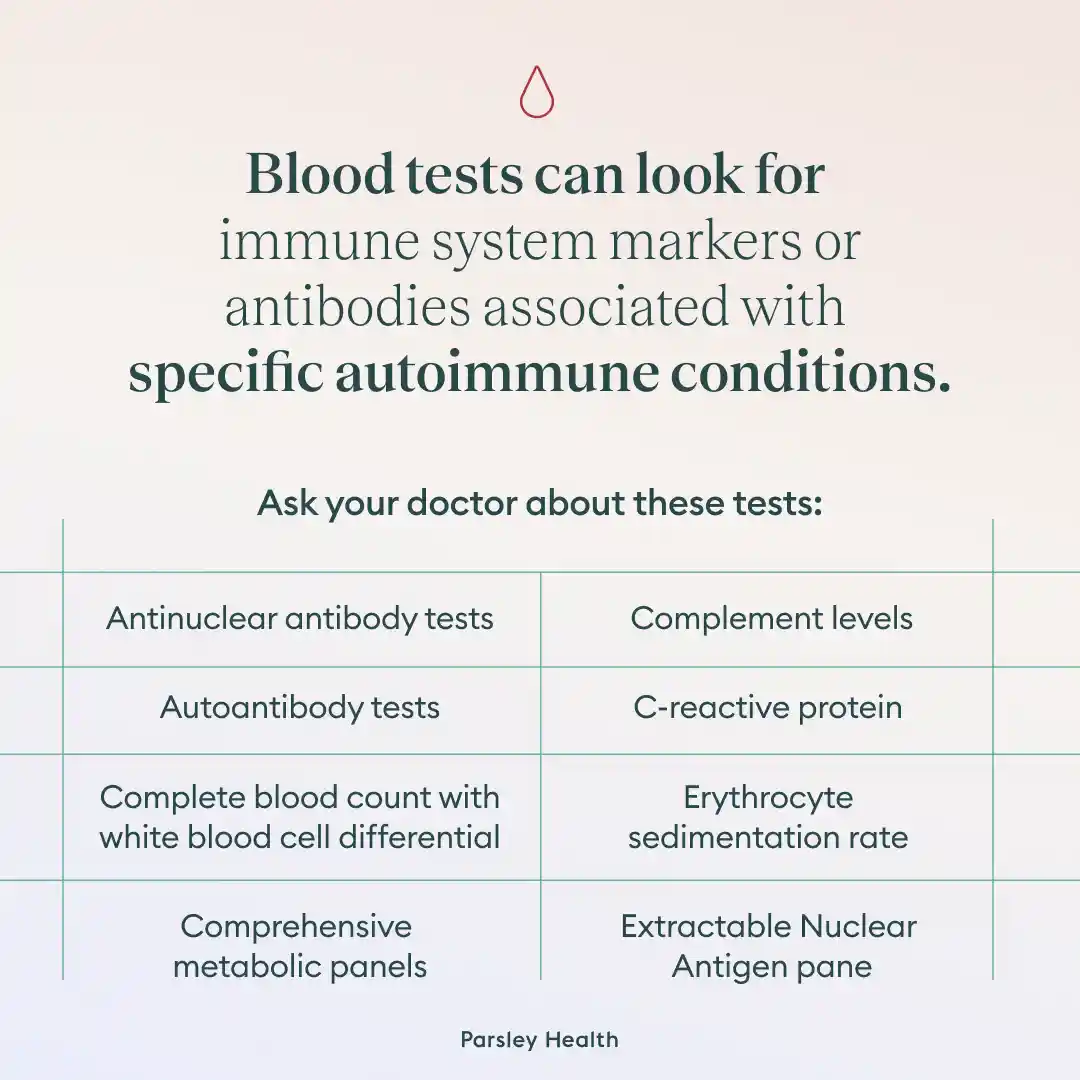An autoimmune rash is a common symptom of several autoimmune diseases, including lupus, psoriasis, and more. Such a rash may be red, itchy, scaly, have raised bumps or welts, and more, depending on the underlying cause.
“Autoimmune diseases often cause rashes because the immune system mistakenly attacks healthy cells, including skin cells,” says Hannah Kopelman, MD, a dermatologist at Kopelman Aesthetic Surgery. “In conditions like lupus, psoriatic arthritis, and rheumatoid arthritis, the immune system becomes overactive and targets different tissues, which frequently includes the skin.”
Read on to learn what causes autoimmune diseases, which autoimmune diseases feature a rash as a common symptom, how autoimmune rashes are managed and treated when to see a doctor, and more.
What is an autoimmune rash?
Our immune systems are designed to monitor for threats, such as an injury, insect bites, viral or bacterial infections, and more. In response, the immune system jumps into action to help fight off illness or repair an injury.
However, the immune system can malfunction and think that a threat is present when it isn’t. In response, it attacks cells, tissues, and organs. When this occurs, an autoimmune disorder may be present. Researchers know about more than 80 autoimmune disorders.
The skin is your largest and heaviest organ. It contains three layers, and for the average adult, its surface includes about 15 to 20 feet. The skin functions as a barrier between the rest of your body and the outside world and encounters toxins, pathogens, and other stressors. The skin is an active immune organ that includes a network of immune cells. For these reasons, autoimmune disorders often affect the skin.
“It can be said that the skin is the window to internal health,” says Amy Huang, MD, a board-certified dermatologist with Medical Offices of Manhattan and a contributor to LabFinder. Many times, autoimmune-associated rashes are the first signs of internal inflammation.”
“The immune system’s attack on the skin leads to inflammation,” Dr. Kopelman adds, “and that’s why a rash is a common symptom.”









